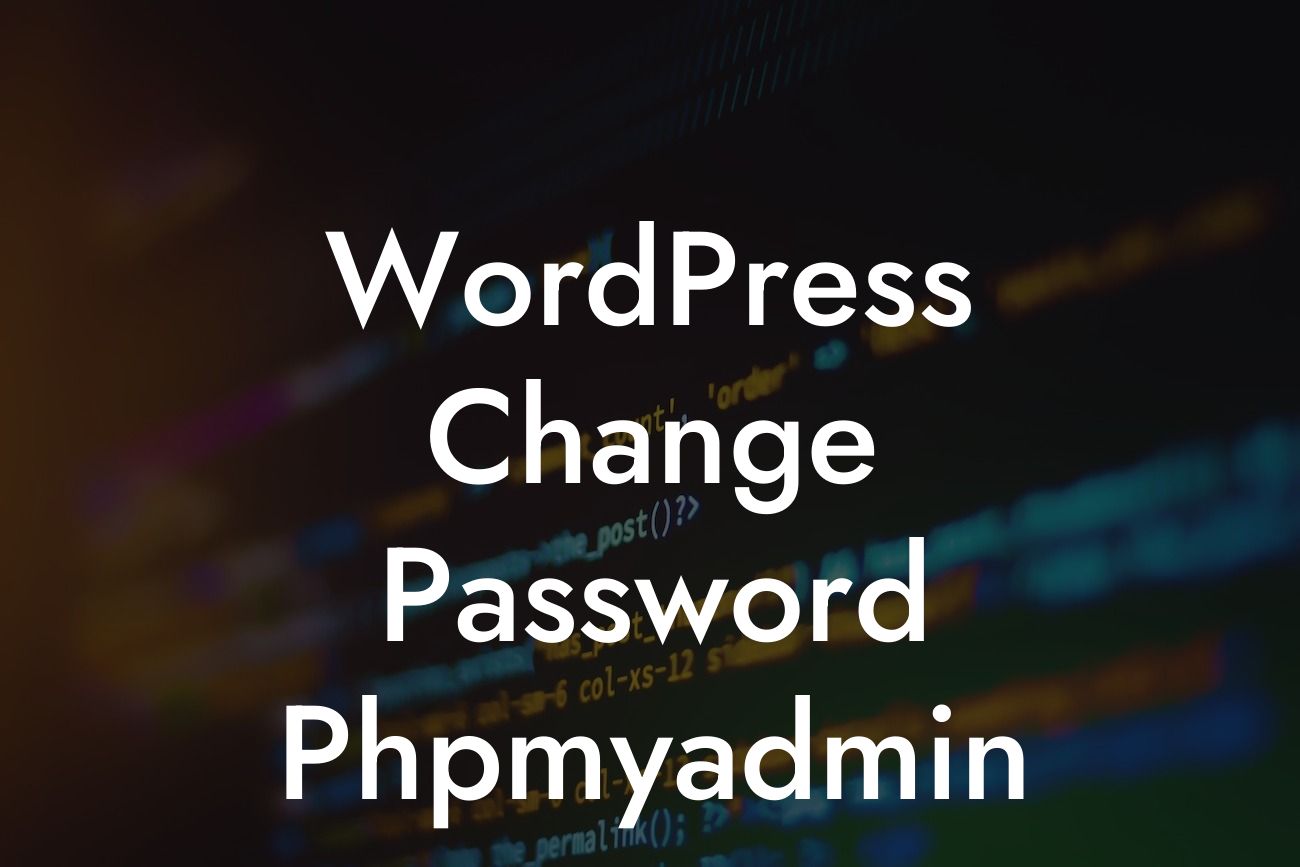Changing passwords regularly is a crucial aspect of maintaining your online security. As a WordPress user, you may find yourself in a scenario where you need to change your password using phpMyAdmin. In this comprehensive guide, we will walk you through the process, ensuring that you can confidently update your WordPress password to enhance your website's security. Get ready to take control of your online presence with DamnWoo!
When it comes to changing your WordPress password using phpMyAdmin, you might feel a bit overwhelmed. However, with our step-by-step instructions, you'll be able to execute this task seamlessly. Let's dive in:
1. Access phpMyAdmin:
Firstly, you need to access phpMyAdmin. This can be done by logging into your hosting account's cPanel or by directly typing yourwebsite.com/phpmyadmin in the browser's address bar. Once you're in, navigate to your WordPress database.
2. Locate the User Table:
Looking For a Custom QuickBook Integration?
Next, locate the user table within your WordPress database. This table usually has a name like wp_users or wp_xxx_users, where "xxx" represents a prefix set during WordPress installation.
3. Edit User Data:
Within the user table, locate the row corresponding to the user whose password you want to change. Click on the "Edit" button for that specific user.
4. Generate a new Password Hash:
To generate a new password hash, use an online MD5 hash generator or choose any other password hashing algorithm supported by your WordPress version.
5. Update the User Password:
Paste the generated hash in the "user_pass" field under the "VALUE" column. Be sure to select the appropriate "Function" option, such as MD5, from the dropdown menu.
Wordpress Change Password Phpmyadmin Example:
Let's say you have a WordPress website for your small business, and you're an entrepreneur looking to change your password using phpMyAdmin. By following the steps outlined above, you can ensure the security of your website by updating your password with ease.
Congratulations! You've successfully learned how to change your WordPress password using phpMyAdmin. Remember, maintaining strong passwords is essential for the security and integrity of your website. Keep exploring DamnWoo's informative guides and take your online presence to new heights. Don't forget to check out our awesome plugins to supercharge your success!
With DamnWoo, your online presence will be extraordinary. Stay tuned for more insightful content that will empower you on your entrepreneurial journey. Share this article with others who can benefit from this knowledge, and enhance your online security today!













